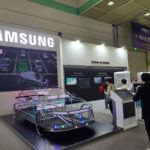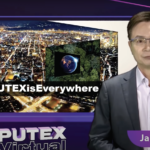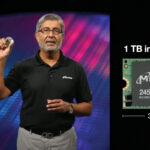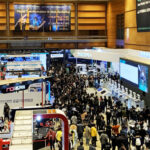ASIA ELECTRONICS INDUSTRYYOUR WINDOW TO SMART MANUFACTURING
Samsung's Innovations Begin at Home
Energy conservation, user experiences, personalization are Samsung Electronics’ three main catchphrases that will redefine its new business strategy for future growth in the post-Corona era.
At CES2022 keynote speech, J.H. Han (Han Jong Hee), vice chairman and CEO with Samsung Electronics said, ” Each year at CES, we show you how advanced technologies like 5G, AI, robotics, IoTs will open up new possibilities for millions around the world. Yet, our (consumers’) expectations of technologies have changed over the past two years. So, today, we are sharing our vision for how hyperconnected and customized experiences not only connect us with family and friend, but also help us hominize with planet to create a more sustainable world to reflect consumers craving for gorgeous products as well as togetherness with family and friends.
Homes will likely be where the newly-defined business mantra will play out, as Samsung is in better position to address smart and connected homes.
True enough, homes are suddenly becoming huge marketplace, as the COVID-19 pandemic-inspired “stay at home” phenomenon has been making homes a center of people’ daily life and activities to work, study, do business, socialize, and entertain.
A myriad of new UI and UX technology as well as connectivity technology are now pouring into homes to string together home appliances and home entertainment products seamlessly and intelligently to make homes user-friendlier, eco-friendlier, smarter, and more importantly personalized places for work, study, and entertainment.
Samsung aims to keep up with this trend, integrating its SmartThings Hub software into a selected product portfolio of smart TVs, smart monitors, and Family Hub refrigerators.
The integration will enable users to virtually control these SmartThings Hub software-built in smart devices homes to deliver unified intelligent home experience.
Hyper-connected Home

“Connected smart home are something we can’t live without. Because more than two thirds of the U.S. households have some sort of smart home devices from appliances and lighting to fitness trackers, we have a glimpse of what the truly connected homes can be, “ said Mark Benson, head of product and engineering at Samsung SmartThings.
The integration doesn’t stop there. Samsung is also integrating Samsung Home Hub software into its SmartThings Hub capability-built-in smart home devices to help users to personalize and customize their product experiences.
The Smart Home Hub is a sort of hyperconnected and intelligent software that can work its way as everyday home assistant.
Once integrated into compatible AI powered appliances and devices, example, it allows users to jumpstart their meals, set the temperature and the lighting.
The Samsung Home Hub was invented by its U.S. subsidiary Samsung SmartThings, a smart home IoT service provider.
The integration of the SmartThings Hub empowers users to get the most out of their Samsung devices by leveraging various smart home communication protocols. In addition to Matter, the built-in software will support connection over Wi-Fi or Ethernet, which will enable communication among a wide range of smart devices. Additional connectivity to Zigbee devices will also be possible through an optional USB accessory.
To speed up the SmartThings ecosystem, Samsung is rallying the likes of its ecosystem partners – Electrolux, arcelik, GE, Haier, and Trane behind the cause to expand its Home Connectivity Alliance. The goal of the alliance is to ensure all the investments in users’ home from HVAC, or heating, ventilation, and air-conditioning system to TVs o fridges to offer safety, reliability, an security regardless of brands.
When it comes to energy conservation, it starts from product design all the way through manufacturing to distribution and ends in home, too.
Its SmartThings Energy service lets users to monitor their electricity usages across all connected smart home devices like air purifier, fridges and TVs. For example, based on your habits, the service recommends you ways to save energy and money.
Home TV remote controller is another example. As Samsung is designing all of its product lineup to minimize the impacts on environment, the remote controller is designed to come built with solar cells to harvest energy from lights as well as radio frequencies in neighboring wi-fi routers in what’s called as an energy harvesting system. In the foreseeable future, energy will be also harvested from other Samsung products like TVs and home appliances. The goal is to eliminate more than 200 million batteries from landfills.




